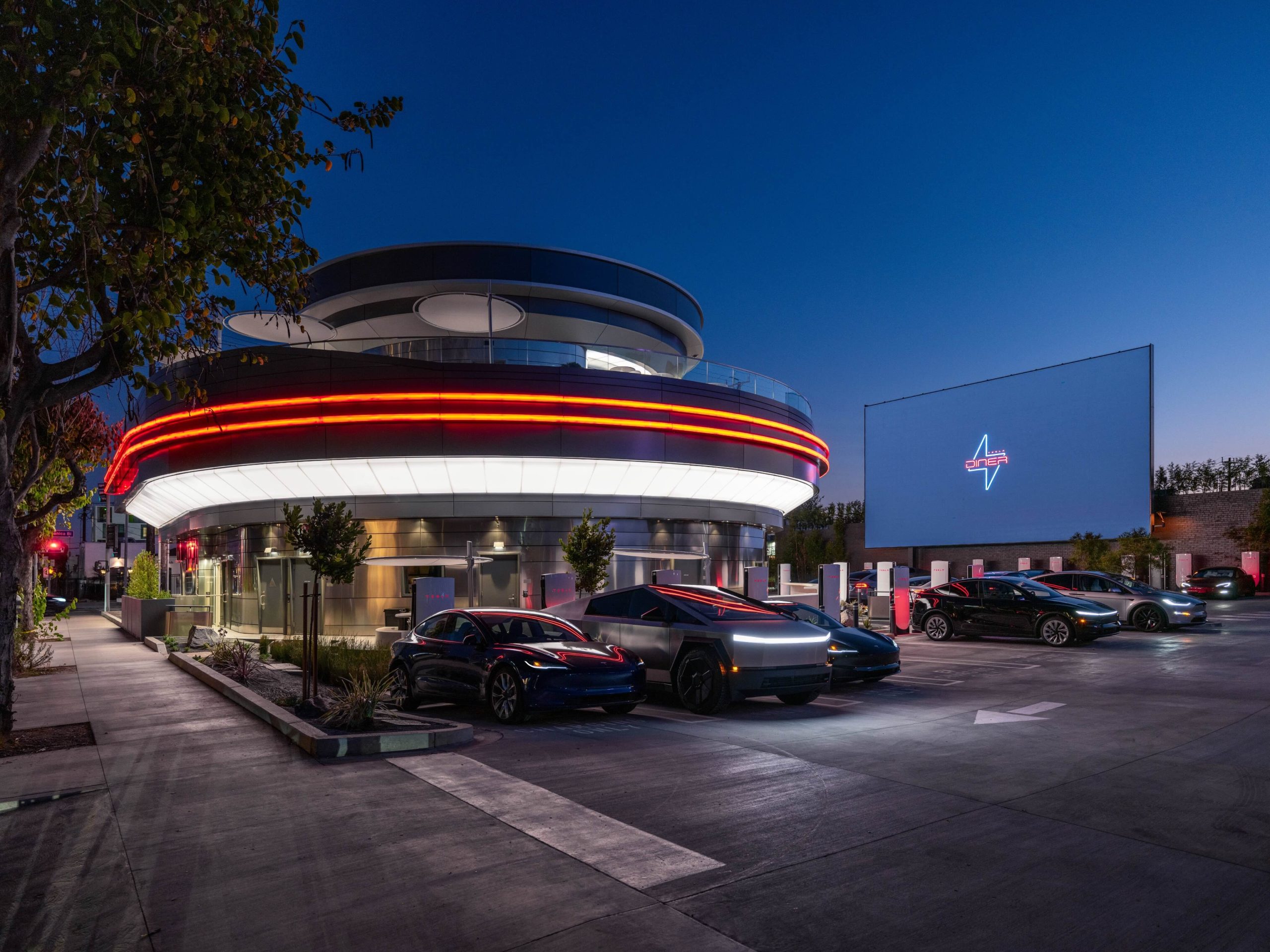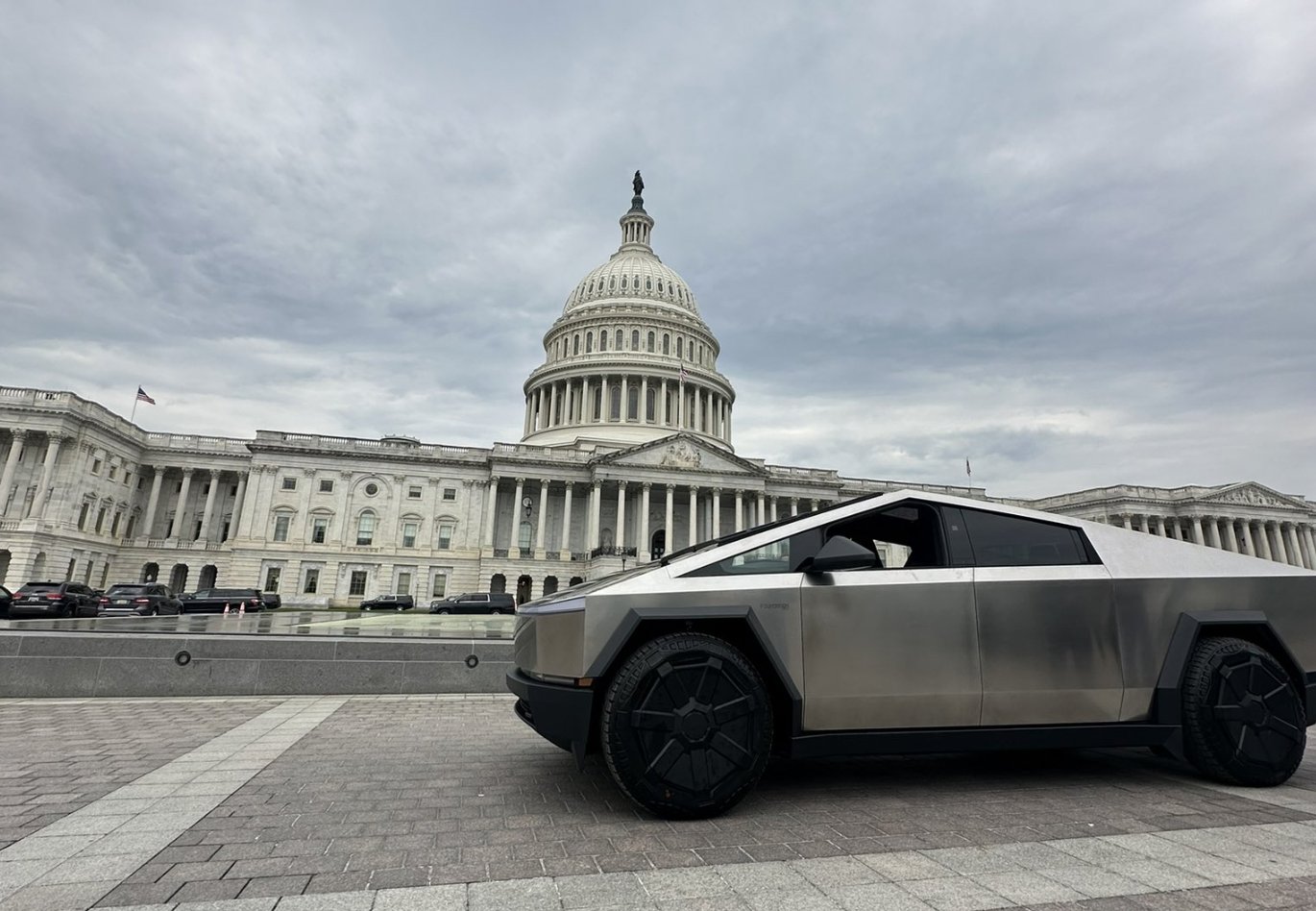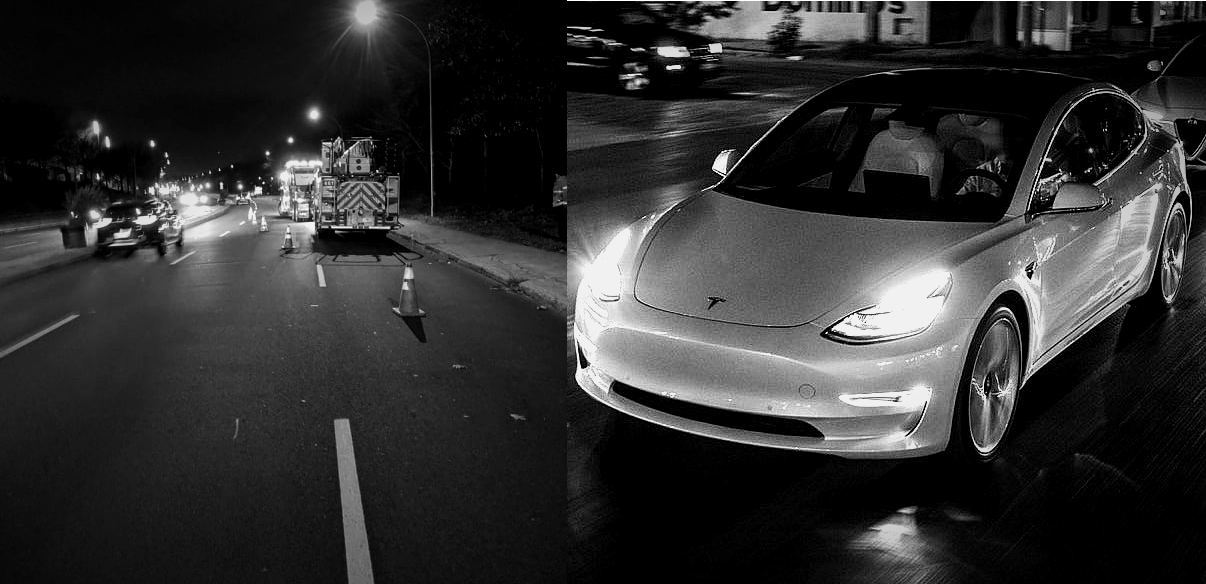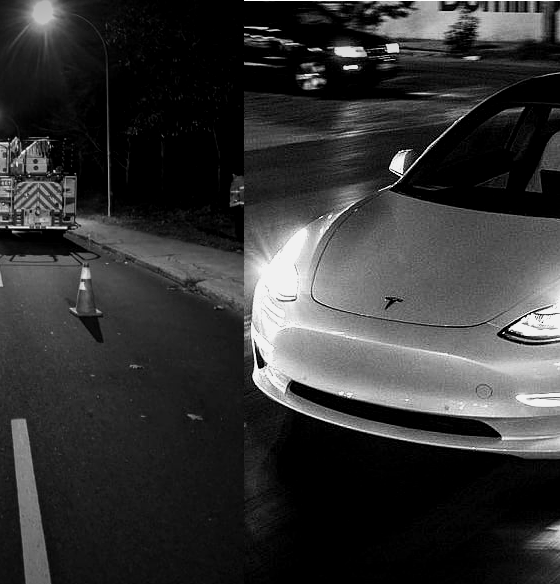Tesla is currently being investigated by the National Highway Traffic Safety Administration (NHTSA) after several of its electric cars crashed into stationary emergency vehicles while Autopilot was engaged. The premise of the investigation itself is enough to whet the appetite of every Tesla skeptic since the idea of Autopilot crashing consistently into parked emergency vehicles makes for a compelling narrative. Tesla later released an update, enabling Autopilot to detect and slow down for stationary emergency vehicles. The NHTSA responded by calling out the company for not issuing a recall when it released its proactive over-the-air software update.
What was lost amidst the spread of the Tesla NHTSA investigation story was the fact that the relatively minor Autopilot update, which simply allowed vehicles to slow down when they detect things such as a police car or a firetruck parked on the side of the road, is already saving numerous lives. This is because there is a deadly problem on America’s roads, and it is something that very few seem to be acknowledging. Emergency personnel are dying on the job at a frighteningly frequent basis. They are dying because cars crash into them while they’re parked on the side of the road. And disturbingly enough, very little is being done about it.
The Flaws of HumanPilot
*Author’s Note and Trigger Warning: The succeeding sections of this article contains links to footage and other online references that may cause distress to readers. Discretion is advised.
One thing that truly stuck out while writing this piece was the sheer frequency of the accidents that happen to emergency personnel while they are responding to someone in need. This was despite the fact that all 50 states in the USA have a “Slow Down Move Over (SDMO)” Law in place. The premise of the SDMO law is simple: Upon noticing an emergency vehicle’s sirens or flashing lights on the side of the road, drivers are required to move away from the emergency vehicle by going into the next lane. If that is not possible, drivers must slow down to reduce the chances of an accident happening. The SDMO law is based on a very simple premise, but it is one that gets violated on a consistent basis.
This is partly due to states interpreting the law differently, with some adopting a “Slow Down and Move Over” model while others are following a “Slow Down or Move Over” system. But ultimately, there have been zero fatalities involving a vehicle that actually slowed down and moved over when they spotted a stationary emergency vehicle. This suggests that the law works, provided that it does get followed.
But when the Move Over Law gets violated, the human toll becomes disturbingly real. A report from the Government Accountability Office (GAO) indicates that about 8,000 injuries involving a stationary emergency vehicle have been reported in one year. As of this year alone, a total of 57 emergency responders have been killed while addressing a roadside issue. Posts from the National Struck-By Heroes Facebook group, which highlight the aftermath of Struck-by injuries (SBIs) are heartbreaking, and videos and posts shared by companies whose staff are killed while on the job are harrowing. This is something that was highlighted by James D. Garcia, the creator of the Move Over Law and an SBI survivor, who shared some of his insights with Teslarati.
“This year is the 25th anniversary of the first Slow Down Move Over Law, passed in South Carolina in 1996. Every state in the US has had an SDMO Law since 2012, and yet this year, we have already reached a record 56 responder deaths (This number has since risen to 57 as of this writing). Since 2018, there have been over 45,000 collisions with stationary roadside objects. Every seven seconds, an object is struck. Every other day, a responder is struck and injured. Every five days, a responder is killed.”
“If you ask the general public the most dangerous risk to a police officer, most would say the chance of being shot in pursuit. If you ask the biggest danger to a firefighter, most envision being trapped in a burning or collapsing building. But statistics prove the real story. Across all agencies, responders are twice more likely to die in an SBI than any other category of work-related injury. It is by far the most dangerous aspect of our job,” Garcia noted.
A DIY Solution
Perhaps the most heart-wrenching thing about the whole situation is the fact that SBIs are not even collected, considered, and analyzed formally by an official government agency, despite it being the leading cause of death and permanent injury for public safety and roadway responders. This situation has been so prevalent that James W. Law, a 32-year-veteran in the emergency roadside response industry and a specialist researcher in the Move Over Law, opted to develop a light sequence he fondly dubs as “E-Modes” to help drivers inform other vehicles that a parked emergency vehicle is nearby. Simply put, the problem of drivers not following SDMO laws is so real and deadly that emergency responders are DIY-ing a solution themselves — because they cannot count on anyone else.
Responding to roadside problems on America’s roads for the past 32 years is no joke, and over this time, Law has encountered the worst drivers possible. Law shared with Teslarati that over the course of his career, he has been personally involved in an accident four times, the first of which happened when he was just 18 years old. In what could very well prove the point that humans are bad drivers, one of Law’s experiences actually involved a driver intentionally crashing into him because he felt upset that traffic was disrupted due to an incident. Law’s legs broke the irate driver’s headlights because of the crash, and the driver wanted to accuse the roadside responder of damaging his car. The police were fortunately reasonable, and Law was not charged. The irate driver, on the other hand, received a $500 ticket for using his vehicle as a weapon.
Speaking with Teslarati, Law admitted that he is a pretty notable Tesla supporter, and he tried his best to emulate CEO Elon Musk’s first principles thinking when he developed E-modes’ custom light sequence. He aims to donate the light sequence protocols he developed to Tesla, partly due to the fact that the company is really the only carmaker out there that seems to be actively doing something to address the deadly issue plaguing emergency roadside personnel today. This became quite evident when the company updated its vehicles to detect and respond to traffic cones on the road. This small update, Law noted, may seem minor — even marginal — to the layman, but for roadside personnel, it was a godsend.
“Tesla’s traffic cone recognition is a crucial safety feature that I take full advantage of on any and all incidents. Properly setting up cones to define the ‘Kill Zone’ offers a quick way to communicate directly to any Tesla vehicle. Unlike humans, Tesla Vision is always aware. It’s one of the ways I communicate with oncoming Teslas. If Elon adopts E-Modes, a Tesla could communicate back to me that it is situation-aware. As a safety advocate, I strongly insist that every emergency responders use cones on every scene every time because it’s the right thing to do to protect everyone,” Law said.
The Lone Problem Solver
Inasmuch as the mainstream media coverage of the NHTSA’s probe on Autopilot’s incidents with emergency vehicles is substantial, the fact is that Tesla only accounted for nine crash injuries with first responder vehicles in the past 12 months. That’s a tiny fraction of the ~8,000 injuries the GAO indicated in its report. The company has also steadily rolled out features to make its vehicles safer. With every update of Autopilot and FSD, features like traffic cone recognition get more refined, and the more refined they get, the more emergency responders they protect. Tesla’s recent Autopilot update, which allows vehicles to slow down when they detect a parked emergency vehicle, is further proof of this.
Law noted that he had been involved in thousands of close calls in his 32-year career, but the one that truly stuck out to him involved a Tesla driver from late 2019, just after the company rolled out Autopilot’s capability to recognize and avoid traffic cones. While he was defining a “Kill Zone” on the road after responding to an incident, he saw an approaching Tesla whose driver appeared to be looking down and not paying attention to the road. Law was unsure if the Tesla was on Autopilot, but the vehicle moved over to the other lane seemingly as soon as it detected the traffic cones that he set up. The veteran emergency responder noted that the Tesla driver seemed surprised as the electric vehicle avoided the cones on its own.
Such an incident, ultimately, is what makes Tesla stand apart, at least for now. It may be an inconvenient truth, especially to those who salivate at the thought of FSD or Autopilot going berserk and hunting down emergency responders, but the fact remains that Tesla is doing far more to protect both its drivers and other people on the road than any other carmaker out there. Emergency responder deaths are preventable, and as the creator of the Move Over Law noted, the lion’s share of these incidents is due to human error. It is this human error that technologies such as Autopilot and FSD are trying to solve, NHTSA probe notwithstanding.
“Ninety percent of all struck-by deaths are a direct result of poor driver behavior. That means that nine out of ten responder deaths could have been prevented if the driver had maintained control of their vehicle at a reasonable speed and reacted in a considerate and attentive manner. Twenty-three percent of lethal struck-by violators were impaired. Five percent were distracted, and another three percent were drowsy. It is important we continue to support efforts to reduce drunk driving and speak out about the rapid rise of distracted driving resulting in responder deaths. Multiple agencies have ongoing PR campaigns to address these aspects, but none are taking on the most dominant category — angry, aggressive, entitled, and selfish drivers.
“The remaining 69% of drivers that crashed into and killed a responder were completely sober. They saw the lights, they recognized the situation, yet they still felt the need to speed up and pass just a few more cars before they moved over. They were in too big of a hurry to slow down to a controllable speed and killed a responder. These drivers consciously made an intentional personal decision to carelessly disregard the life of a responder. Self-absorbed drivers have become the norm. Stronger laws, higher fines, bigger signs, and brighter lights have no effect once they get behind the wheel. We need to face this reality and develop a strategy that confronts this disregard. We must reinforce the value of a responder’s life over whatever current personal priorities are influencing these drivers’ behavior,” Garcia noted.
A (Potentially) Safer Future
One can only hope that agencies such as the NHTSA could see the bigger picture with regards to vehicles and the advantages of technologies such as Autopilot and Full Self-Driving. It takes an immense amount of short-sightedness, after all, to remain fixated on whether a recall was filed for a proactive Autopilot update, or on 11 incidents that involved a Tesla crashing into a stationary emergency vehicle, all while one emergency personnel is killed every five days. Focusing on Tesla and ignoring the larger problem at hand seems counter-productive at best.
In an ideal scenario, technologies such as Autopilot’s capability to identify, slow down, and potentially even move over to another lane when an emergency vehicle is detected would become mandatory for all cars on the road. As noted by esteemed auto teardown expert Sandy Munro, advanced driver-assist systems such as Autopilot and FSD have the potential to save lives on the same level as seatbelts, perhaps even more. And in this light, John Gardella, a shareholder at CMBG3 Law in Boston, MA, told Teslarati that if the NHTSA really wishes to help roll out new safety features, it would actually be a lot easier than one might imagine.
“Implementing the safety feature in Tesla’s vehicles will be easier than one might imagine. The National Highway Traffic Safety Administration (NHTSA) showed earlier in 2021 through its final rule for safety features for automated driving systems that it does not wish to set onerous standards prior to many features for automated driving system (ADS) vehicles coming to market. In fact, the desire of the NHTSA was to reduce barriers to having ADS safety features come to market more rapidly, and thereby accelerate autonomous vehicles coming to mass markets. The NHTSA received some criticism for its approach. However, the NHTSA does still have the authority to interpret the Federal Motor Vehicle Safety Standards (FMVSS), investigate perceived defects or unreasonably safe vehicle features, and carry out its enforcement authority, including recall power,” Gardella said.
Don’t hesitate to contact us with news tips. Just send a message to tips@teslarati.com to give us a heads up.

News
Tesla Diner defies the ‘Doom’ narrative: Profitable, Popular, and Here to Stay

The Tesla Diner has been subject to many points of criticism since its launch in mid-2025, and skeptics and disbelievers claim the company’s latest novel concept is on its way down, but there’s a lot of evidence to state that is not the case.
The piece cites anecdotal evidence like empty parking lots, more staff than customers during a December visit, removed novelty items, like Optimus robot popcorn service and certain menu items, the departure of celebrity chef Eric Greenspan in November 2025, slow service, high prices, and a shift in recent Google/Yelp reviews toward disappointment.
The piece frames this as part of broader Tesla struggles, including sales figures and Elon Musk’s polarizing image, calling it a failed branding exercise rather than a sustainable restaurant.
This narrative is overstated and sensationalized, and is a good representation of coverage on Tesla by today’s media.
Novelty Fade is Normal, Not Failure
Any hyped launch, especially a unique Tesla-branded destination blending dining, Supercharging, and a drive-in theater, naturally sees initial crowds taper off after the “Instagram effect” wears down.
Tesla makes major change at Supercharger Diner amid epic demand
This is common for experiential spots in Los Angeles, especially pop-up attractions or celebrity-backed venues. The article admits early success with massive lines and social media buzz, but treats the return to normal operations as “dying down.”
In reality, this stabilization is a healthy sign of transitioning from hype-driven traffic to steady patronage.
Actual Performance Metrics Contradict “Ghost Town” Claims
- In Q4 2025, the Diner generated over $1 million in revenue, exceeding the average McDonald’s location
- It sold over 30,000 burgers and 83,000 fries in that quarter alone. These figures indicate a strong ongoing business, especially for a single-location prototype focused on enhancing Supercharger experiences rather than competing as a mass-market chain
It’s not a ghost town lol. The @Tesla Diner still had over 30,000 burger orders and 83,000 fries orders in Q4. The diner generated over $1M in revenue in Q4, a $4M annual run rate, which is more than the average McDonald’s…. pic.twitter.com/XvAGLUqxej
— Sawyer Merritt (@SawyerMerritt) January 4, 2026
Conflicting On-the-Ground Reports
While the article, and other similar pieces, describe a half-full parking lot and sparse customers during specific off-peak visits, other recent accounts push back:
- A January 2026 X post noted 50 of 80 Supercharger stalls were busy at 11 a.m., calling it “the busiest diner in Hollywood by close to an order of magnitude
TESLA DINER 🍔
Frantic!!!
Crazy busy. pic.twitter.com/wMbmr8SFFn
— Rich & Sharon (@HullTeslaModel3) January 4, 2026
- Reddit discussions around the same time describe it as not empty when locals drive by regularly, with some calling the empty narrative “disingenuous anti-Tesla slop.”
When we visited it last week it was packed. We had to wait to enter, get a table and go to the restroom. We were lucky to find a spot to charge.
— Rani G (@ranig) January 4, 2026
Bottom Line
The Tesla Diner, admittedly, is not the nonstop circus it was at launch–that was never sustainable or intended. But, it’s far from “dying” or an “empty pit stop.”
It functions as a successful prototype: boosting Supercharger usage, generating solid revenue, and serving as a branded amenity in the high-traffic EV market of Los Angeles.
News
Tesla stands to win big from potential adjustment to autonomous vehicle limitations
Enabling scale, innovation, and profitability in a sector that is growing quickly would benefit Tesla significantly, especially as it has established itself as a leader.

Tesla stands to be a big winner from a potential easing of limitations on autonomous vehicle development, as the United States government could back off from the restrictions placed on companies developing self-driving car programs.
The U.S. House Energy and Commerce subcommittee will hold a hearing later this month that will aim to accelerate the deployment of autonomous vehicles. There are several key proposals that could impact the development of self-driving cars and potentially accelerate the deployment of this technology across the country.
These key proposals include raising the NHTSA’s exemption cap from 2,500 to 90,000 vehicles per year per automaker, preempting state-level regulations on autonomous vehicle systems, and mandating NHTSA guidelines for calibrating advanced driver assistance systems (ADAS).
Congress, to this point, has been divided on AV rules, with past bills like the 2017 House-passed measure stalling in the Senate. Recent pushes come from automakers urging the Trump administration to act faster amid competition from Chinese companies.
Companies like Tesla, who launched a Robotaxi service in Austin and the Bay Area last year, and Alphabet’s Waymo are highlighted as potential beneficiaries from lighter sanctions on AV development.
The NHTSA recently pledged to adopt a quicker exemption review for autonomous vehicle companies, and supporters of self-driving tech argue this will boost U.S. innovation, while critics are concerned about safety and job risks.
How Tesla Could Benefit from the Proposed Legislation
Tesla, under CEO Elon Musk’s leadership, has positioned itself as a pioneer in autonomous driving technology with its Full Self-Driving software and ambitious Robotaxi plans, including the Cybercab, which was unveiled in late 2024.
The draft legislation under consideration by the U.S. House subcommittee could provide Tesla with significant advantages, potentially transforming its operational and financial landscape.
NHTSA Exemption Cap Increase
First, the proposed increase in the NHTSA exemption cap from 2,500 to 90,000 vehicles annually would allow Tesla to scale up development dramatically.
Currently, regulatory hurdles limit how many fully autonomous vehicles can hit the roads without exhaustive approvals. For Tesla, this means accelerating the rollout of its robotaxi fleet, which Musk envisions as a network of millions of vehicles generating recurring revenue through ride-hailing. With Tesla’s vast existing fleet of over 6 million vehicles equipped with FSD hardware, a higher cap could enable rapid conversion and deployment, turning parked cars into profit centers overnight.
Preempting State Regulations
A united Federal framework would be created if it could preempt State regulations, eliminating the patchwork of rules that currently complicate interstate operations. Tesla has faced scrutiny and restrictions in states like California, especially as it has faced harsh criticism through imposed testing limits.
A federal override of State-level rules would reduce legal battles, compliance costs, and delays, allowing Tesla to expand services nationwide more seamlessly.
This is crucial for Tesla’s growth strategy, as it operates in multiple markets and aims for a coast-to-coast Robotaxi network, competing directly with Waymo’s city-specific expansions.
Bringing Safety Standards to the Present Day
Innovation in the passenger transportation sector has continued to outpace both State and Federal-level legislation, which has caused a lag in the development of many things, most notably, self-driving technology.
Updating these outdated safety standards, especially waiving requirements for steering wheels or mirrors, directly benefits Tesla’s innovative designs. Tesla wanted to ship Cybertruck without side mirrors, but Federal regulations required the company to equip the pickup with them.
Cybercab is also planned to be released without a steering wheel or pedals, and is tailored for full autonomy, but current rules would mandate human-ready features.
Streamlined NHTSA reviews would further expedite approvals, addressing Tesla’s complaints about bureaucratic slowdowns. In a letter written in June to the Trump Administration, automakers, including Tesla, urged faster action, and this legislation could deliver it.
In Summary
This legislation represents a potential regulatory tailwind for Tesla, but it still relies on the government to put forth action to make things easier from a regulatory perspective. Enabling scale, innovation, and profitability in a sector that is growing quickly would benefit Tesla significantly, especially as it has established itself as a leader.
News
Nvidia CEO Jensen Huang explains difference between Tesla FSD and Alpamayo
“Tesla’s FSD stack is completely world-class,” the Nvidia CEO said.

NVIDIA CEO Jensen Huang has offered high praise for Tesla’s Full Self-Driving (FSD) system during a Q&A at CES 2026, calling it “world-class” and “state-of-the-art” in design, training, and performance.
More importantly, he also shared some insights about the key differences between FSD and Nvidia’s recently announced Alpamayo system.
Jensen Huang’s praise for Tesla FSD
Nvidia made headlines at CES following its announcement of Alpamayo, which uses artificial intelligence to accelerate the development of autonomous driving solutions. Due to its focus on AI, many started speculating that Alpamayo would be a direct rival to FSD. This was somewhat addressed by Elon Musk, who predicted that “they will find that it’s easy to get to 99% and then super hard to solve the long tail of the distribution.”
During his Q&A, Nvidia CEO Jensen Huang was asked about the difference between FSD and Alpamayo. His response was extensive:
“Tesla’s FSD stack is completely world-class. They’ve been working on it for quite some time. It’s world-class not only in the number of miles it’s accumulated, but in the way it’s designed, the way they do training, data collection, curation, synthetic data generation, and all of their simulation technologies.
“Of course, the latest generation is end-to-end Full Self-Driving—meaning it’s one large model trained end to end. And so… Elon’s AD system is, in every way, 100% state-of-the-art. I’m really quite impressed by the technology. I have it, and I drive it in our house, and it works incredibly well,” the Nvidia CEO said.
Nvidia’s platform approach vs Tesla’s integration
Huang also stated that Nvidia’s Alpamayo system was built around a fundamentally different philosophy from Tesla’s. Rather than developing self-driving cars itself, Nvidia supplies the full autonomous technology stack for other companies to use.
“Nvidia doesn’t build self-driving cars. We build the full stack so others can,” Huang said, explaining that Nvidia provides separate systems for training, simulation, and in-vehicle computing, all supported by shared software.
He added that customers can adopt as much or as little of the platform as they need, noting that Nvidia works across the industry, including with Tesla on training systems and companies like Waymo, XPeng, and Nuro on vehicle computing.
“So our system is really quite pervasive because we’re a technology platform provider. That’s the primary difference. There’s no question in our mind that, of the billion cars on the road today, in another 10 years’ time, hundreds of millions of them will have great autonomous capability. This is likely one of the largest, fastest-growing technology industries over the next decade.”
He also emphasized Nvidia’s open approach, saying the company open-sources its models and helps partners train their own systems. “We’re not a self-driving car company. We’re enabling the autonomous industry,” Huang said.










